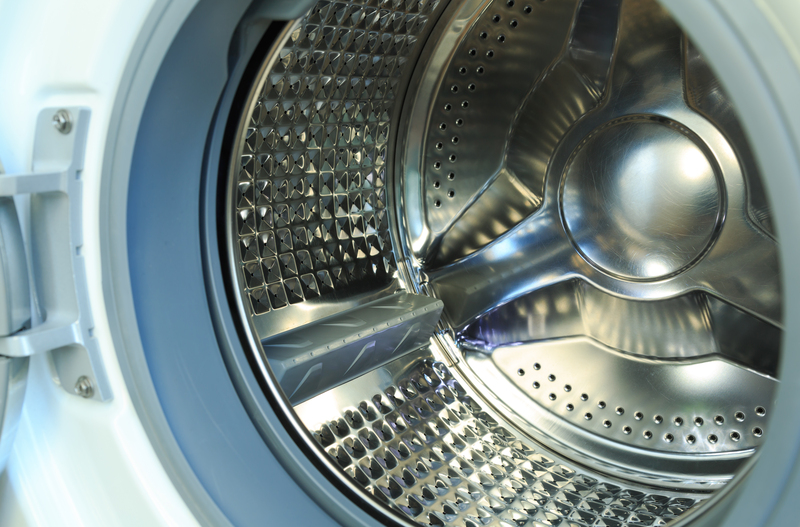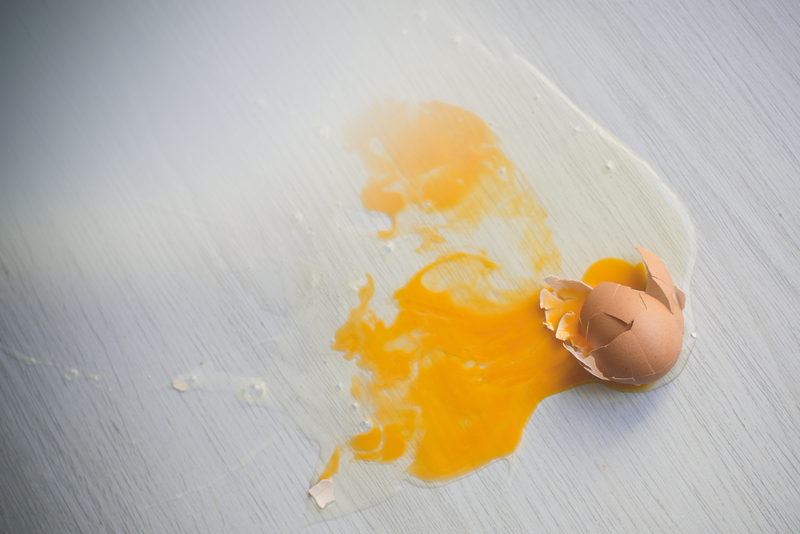Combat Mold: Tips for a Cleaner Bathroom
Posted on 25/09/2025
Combat Mold: Tips for a Cleaner Bathroom
A fresh, gleaming bathroom isn't just pleasant--it's crucial for health and well-being. Unfortunately, lurking in many corners is a persistent enemy: mold. Battling bathroom mold is a challenge faced by homeowners everywhere, as mold thrives in damp, enclosed spaces. In this comprehensive guide, you'll discover effective strategies and expert advice to combat bathroom mold, tips to maintain a hygienic space, and answers to common questions about mold prevention.

Understanding Mold in the Bathroom
Mold is a type of fungus that flourishes in warm, humid environments. Bathrooms, with their frequent use of water, limited ventilation, and high humidity, offer gorgeous conditions for mold growth. Not only is mold unsightly, but prolonged exposure can also cause health complications, especially for people with allergies or respiratory conditions. Thus, effective mold removal and prevention should be part of every bathroom cleaning routine.
Common Types of Bathroom Mold
- Aspergillus: Found in damp places, can cause allergic reactions.
- Cladosporium: Appears green or black, often grows on wood or fabrics.
- Stachybotrys Chartarum (Black Mold): The infamous toxic mold, thrives in consistently wet areas.
Identifying what type of mold you have is secondary to removing it and preventing its return. Nonetheless, black mold is particularly hazardous and may require professional removal.
Why Is Bathroom Mold a Problem?
- Health risks: Causes allergic reactions, asthma attacks, and respiratory issues.
- Structural damage: Over time, mold can damage grout, drywall, and even wooden studs.
- The risk of spreading: Mold reproduces via airborne spores, potentially affecting other areas of your home.
Given these risks, it's critical to not only remove existing mold but also commit to ongoing mold prevention in your bathroom.
How to Combat Bathroom Mold
Maintain Proper Ventilation
A key way to combat bathroom mold is ensuring air flows freely. Mold spores thrive in stagnant, moist air. Improving ventilation helps keep surfaces dry.
- Use an exhaust fan: Run your bathroom fan for 15-30 minutes after bathing.
- Open windows: When weather permits, let in fresh air to remove humidity.
- Keep the door open: Even a small crack helps reduce trapped moisture.
Reduce Moisture and Humidity
Since mold removal doesn't address the root cause, minimizing moisture is essential.
- Wipe down wet surfaces: Use a squeegee or towel to dry tiles, showers, and bathtubs after use.
- Fix leaks promptly: Dripping faucets or pipes create a persistent humidity issue.
- Use a dehumidifier: In especially damp bathrooms, a portable dehumidifier can work wonders.
Regular Cleaning Routine
Routine cleaning is essential to prevent bathroom mold from gaining a foothold. An effective routine includes:
- Weekly scrubbing: Use mildew-resistant bathroom cleaner on tiles, grout, shower curtains, and corners.
- Wash bath mats and towels: Launder frequently, as damp fabrics are ideal for mold colonization.
- Clean drains: Clogged or slow drains retain water, increasing humidity.
Use Mold-Resistant Materials and Products
Upgrading bathroom surfaces with mold-resistant options can be a game changer.
- Grout and caulk: Choose antimicrobial formulations for showers and sinks.
- Paint: Mold-resistant paints create a protective barrier on walls and ceilings.
- Shower curtains: Opt for mold-resistant or quick-drying plastics and wash fabric curtains often.
DIY Mold Removal: Effective Solutions
Not all mold problems require professional help. Small, surface-level infestations can be managed with household cleaners. Here is how you can eliminate bathroom mold on your own:
Supplies Needed
- Protective gloves and goggles
- Face mask (to avoid inhaling spores)
- Scrub brush or old toothbrush
- Spray bottle
- White vinegar or hydrogen peroxide
- Baking soda (optional)
- Old rags or paper towels
Step-by-Step Guide
- Wear protection: Before cleaning, ensure you're wearing gloves and a mask.
- Spray affected areas: Use undiluted vinegar or 3% hydrogen peroxide. Let it sit for at least 10 minutes.
- Scrub vigorously: Use the brush to break up mold colonies, focusing on grout lines.
- Rinse and dry: Wipe with a clean, moist cloth; follow up by drying the area thoroughly.
- Repeat as needed: For persistent spots, apply a paste of baking soda and water, let sit, then scrub and rinse.
Note: Avoid mixing cleaners, especially if using bleach, which produces toxic fumes when combined with other substances. Always ventilate the area well during cleaning.
Preventative Strategies for Mold-Free Bathrooms
Keep Surfaces Dry
Mold cannot grow without water. Drying surfaces after every use is one of the simplest--and most effective--mold prevention techniques.
- Squeegee shower walls and doors after every shower.
- Hang up towels and bath mats to dry thoroughly.
- Wipe up water spills immediately.
Inspect and Repair Regularly
With ever-present moisture, even small leaks can quickly escalate into major problems if not addressed swiftly.
- Check under sinks and around toilets for standing water.
- Inspect caulk and grout for cracks; repair as needed to keep water out of vulnerable spots.
- Replace worn or damaged seals on plumbing fixtures.
Declutter the Bathroom
Fewer items mean fewer opportunities for mold to grow out of sight.
- Store toiletries and cleaning supplies in cabinets.
- Avoid stacking or storing wet washcloths and sponges.
- Choose open shelving for easy cleaning and better airflow.
When to Call in Professionals
Most minor bathroom mold problems can be managed with regular cleaning and maintenance. However, larger infestations may require expert assessment and remediation.
- Mold covers more than 10 square feet (about 1 square meter).
- You notice mold inside walls, ceilings, or under flooring.
- There is a persistent, musty odor that cleaning does not resolve.
- Health symptoms worsen after exposure.
In these cases, professional mold remediation ensures safe, thorough removal and addresses underlying moisture problems.
Frequently Asked Questions about Bathroom Mold
How can I prevent mold from coming back?
Routine maintenance, proper ventilation, and keeping surfaces dry are your best defenses against recurring mold growth.
Is bleach the best way to remove bathroom mold?
While bleach can kill surface mold, it often does not penetrate porous materials, leaving roots behind. Vinegar and hydrogen peroxide are safer, effective alternatives for most surfaces.
Are there natural methods for mold prevention?
Yes! Vinegar, tea tree oil spray, and baking soda are natural, eco-friendly mold busters. Consistent use helps control and prevent new infestations.
What are signs of hidden mold?
- Persistent musty smell
- Sudden increase in allergy symptoms
- Peeling paint or wallpaper
- Discoloration or bulging walls/ceilings

Final Thoughts: A Mold-Free, Healthier Bathroom
No one wants the unsightly stains or health risks associated with mold in the bathroom. Combatting this common problem comes down to controlling moisture, enhancing ventilation, and maintaining a regular cleaning routine. By incorporating these proven tips into your household management, you'll enjoy a cleaner, healthier bathroom--and peace of mind.
Remember: Even small changes, like running the exhaust fan or wiping down the shower, make a huge difference. Stay proactive and consistent, and you'll keep bathroom mold firmly under control. If you ever face a stubborn or extensive mold problem, don't hesitate to seek expert help for safe and lasting results.
Your Next Steps to a Cleaner Bathroom
- Assess your bathroom's ventilation system: Upgrade or clean fans and open windows when possible.
- Establish a weekly cleaning schedule: Keep mold from gaining a foothold with regular maintenance.
- Invest in mold-resistant materials: For lasting protection, use advanced building materials and cleaning products.
Take these actionable steps today--and enjoy the fresh, sparkling, mold-free bathroom you deserve!



